How to get rid of lawn grubs naturally: the expert way to protect your turf
Learning how to get rid of lawn grubs is well worth doing if you want a pristine stretch of green this season
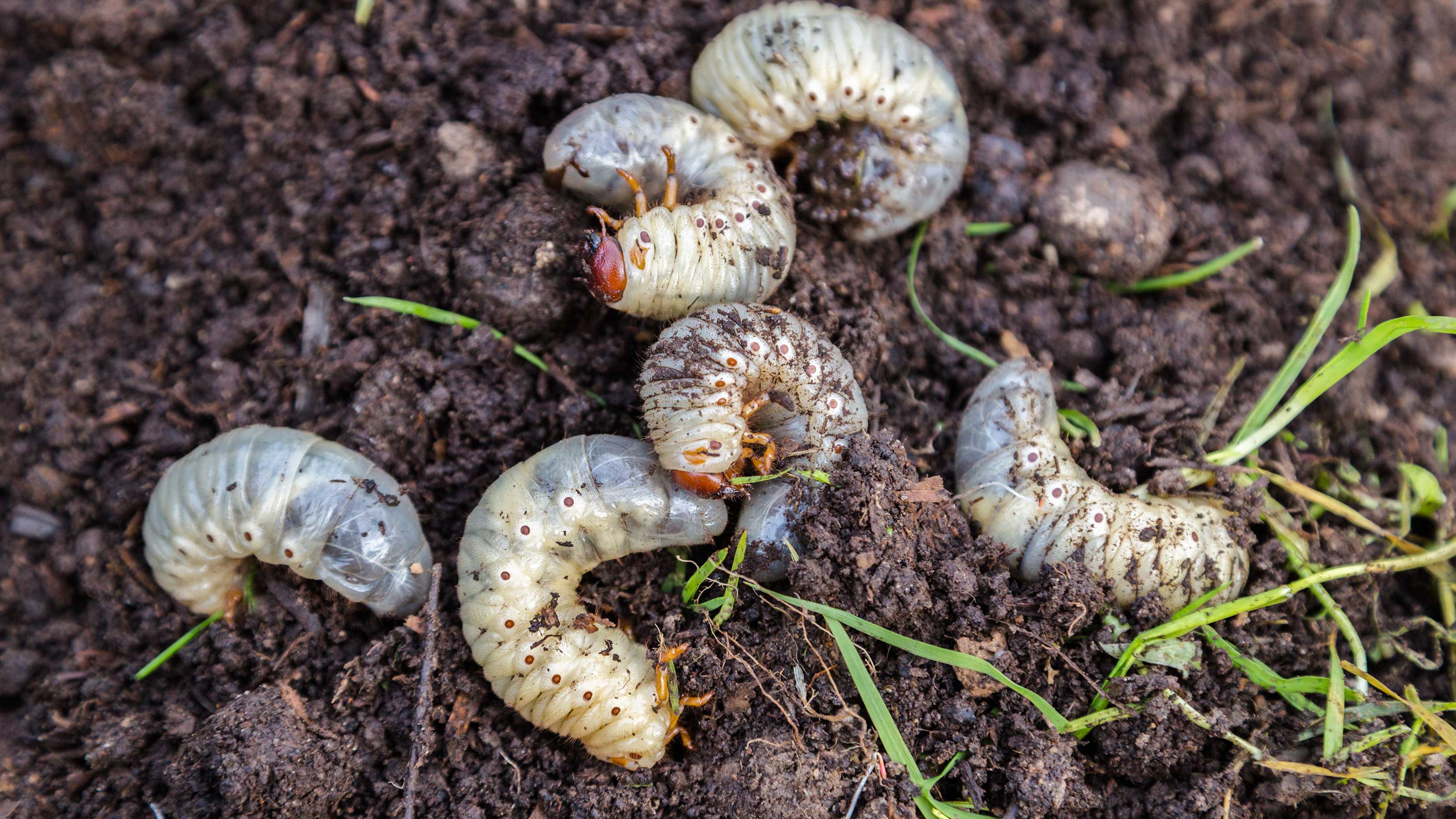

It's always a good idea to know how to get rid of lawn grubs, whether you're dealing with a current infestation or just want to pest-proof your garden against future threats.
'The arrival of spring brings with it a double threat for garden lawns,' explains the team at BASF, the world's largest breeder of beneficial nematodes. As the temperature rises, magpies, crows, badgers, and foxes will start their hunt for some of their favorite snacks – lawn grubs. These are the larvae of beetles, such as chafer beetles, as well as the larvae of crane flies (known as leatherjackets). 'The larvae live just below the surface of the lawn and the animals and birds will scrape and dig in search of them, destroying the lawn in the process,' explains the team.
But it's not just the larger prey that can cause damage – the grubs do their fair share of harm themselves, too. 'Both leatherjackets and garden chafer grubs attack grass roots,' continues BASF, 'resulting in slow growth and yellow patches, leaving it easy to pull up, with little or no roots.'
If you've been busy perfecting your lawn ideas for your plot, then seeing your hard work destroyed thanks to pesky grubs can be devastating. But don't worry – we've brought together all the expert advice you need to keep these pests at bay.
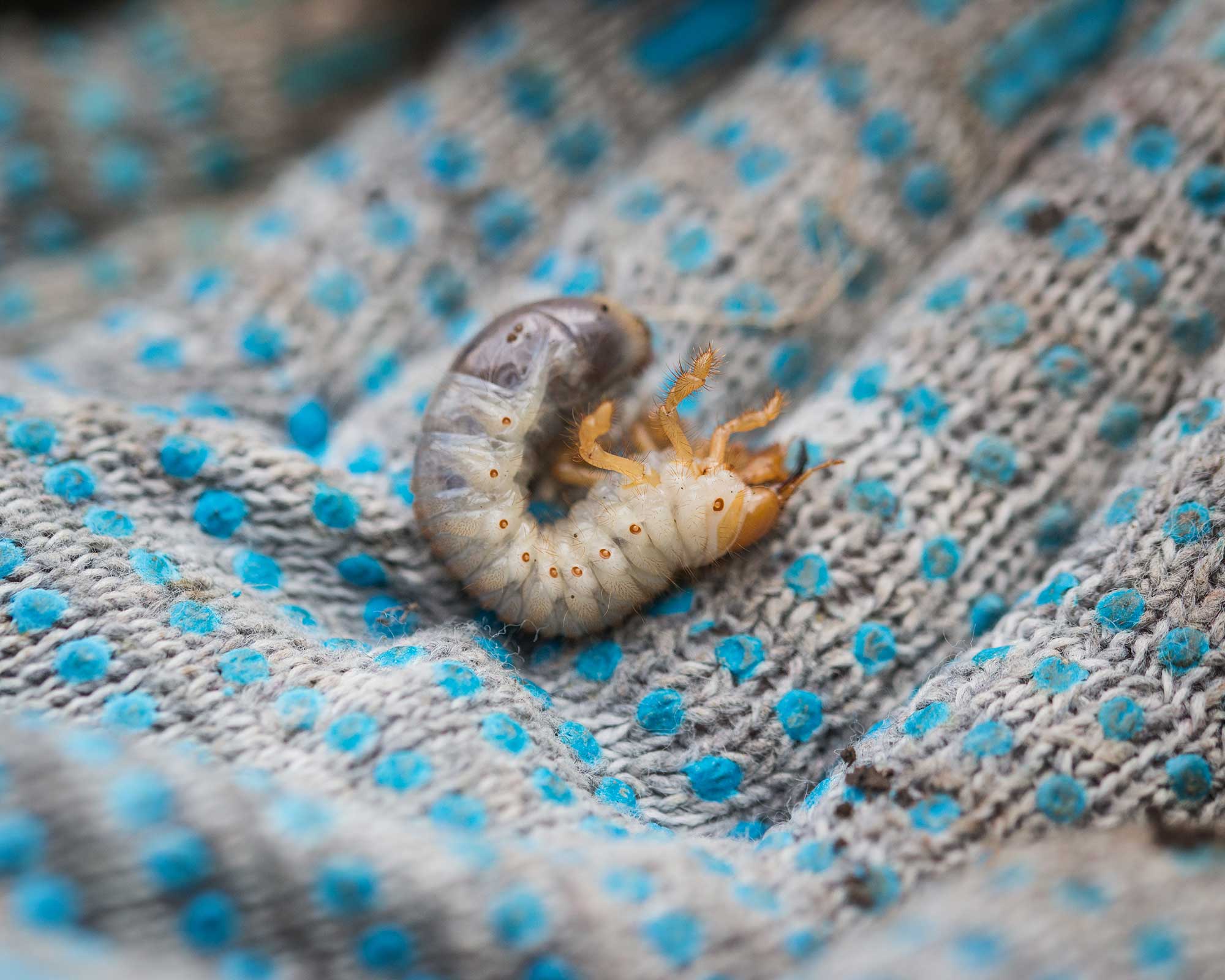
Grubs will damage your lawn in spring and autumn
How to get rid of lawn grubs using beneficial nematodes
When getting rid of lawn weeds, there are many chemical and natural solutions available. But when it comes to lawn grubs, the go-to approach to tackle these intruders tends to be with beneficial nematodes, available on Amazon. These are microscopic, living organisms that infect the grubs with a deadly bacterial disease.
Nematodes occur naturally in soil, and some companies, such as BASF, breed specific types that each seek out and kill particular prey. Their dedicated products arrive in the form of a fibrous paste, which you then disperse in water (following mixing guidelines). 'The watery mix can then be applied via a watering can with a coarse rose for a small lawn or with a hose-end feeder for larger lawns,' the team explains. Be sure to follow the instructions on your chosen product's label, though, as application methods may vary.
'Once the garden chafer grub and leatherjacket population has been reduced by the nematodes, the large amount of nematodes applied will die back to their original numbers found naturally in the soil,' explains BASF.
This treatment tends to be quick and effective. 'Normally, two treatments are sufficient to exterminate a colony,' says John Negus, a gardening expert for Amateur Gardening.
And once you've dealt with the pests, repair damage either by learning how to lay turf or planting grass from seed in mid to late spring. This is when any leftover grubs move deeper into the soil to pupate.
'Poorly maintained lawns are more susceptible to damage, so attention paid to lawn care can help avoid infestations,' John adds.
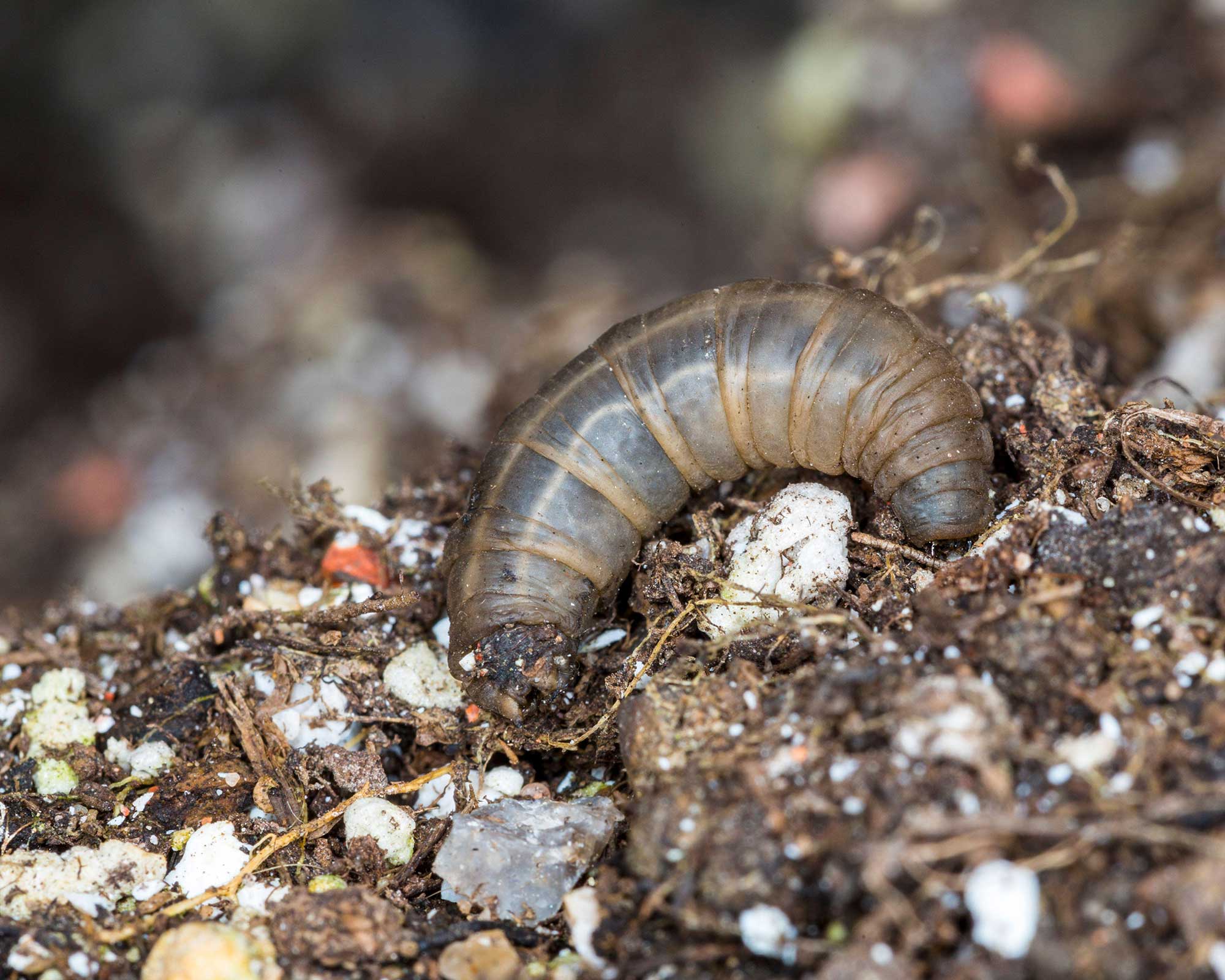
Leatherjackets are crane fly larvae
When is the best time to get rid of lawn grubs?
As well as knowing how to get rid of lawn grubs naturally, for the biggest chance of success, you'll also need to know the best time of year to take action.
'The critical times for controlling this pest are September and April,' says John Negus. This is partly because, for the nematodes to be effective, they need to be applied when the soil is warm and moist (between (55–68ºF/12–20ºC, as the RHS advises). But also, at this time, the grubs will be nearest the surface of the turf and thus feeding on the roots.
Add it to your list of other spring lawn care and autumn lawn care jobs and you'll be rewarded with a healthy stretch of green.
You can also add nematodes as a preventive measure from July to September, the RHS says.
And if you're specifically looking to get rid of leatherjackets, a good rule of thumb is to wait two weeks from when you first see crane flies (usually in spring) before applying nematodes. Then, apply again in two weeks' time, keeping the soil moist throughout, says BASF.
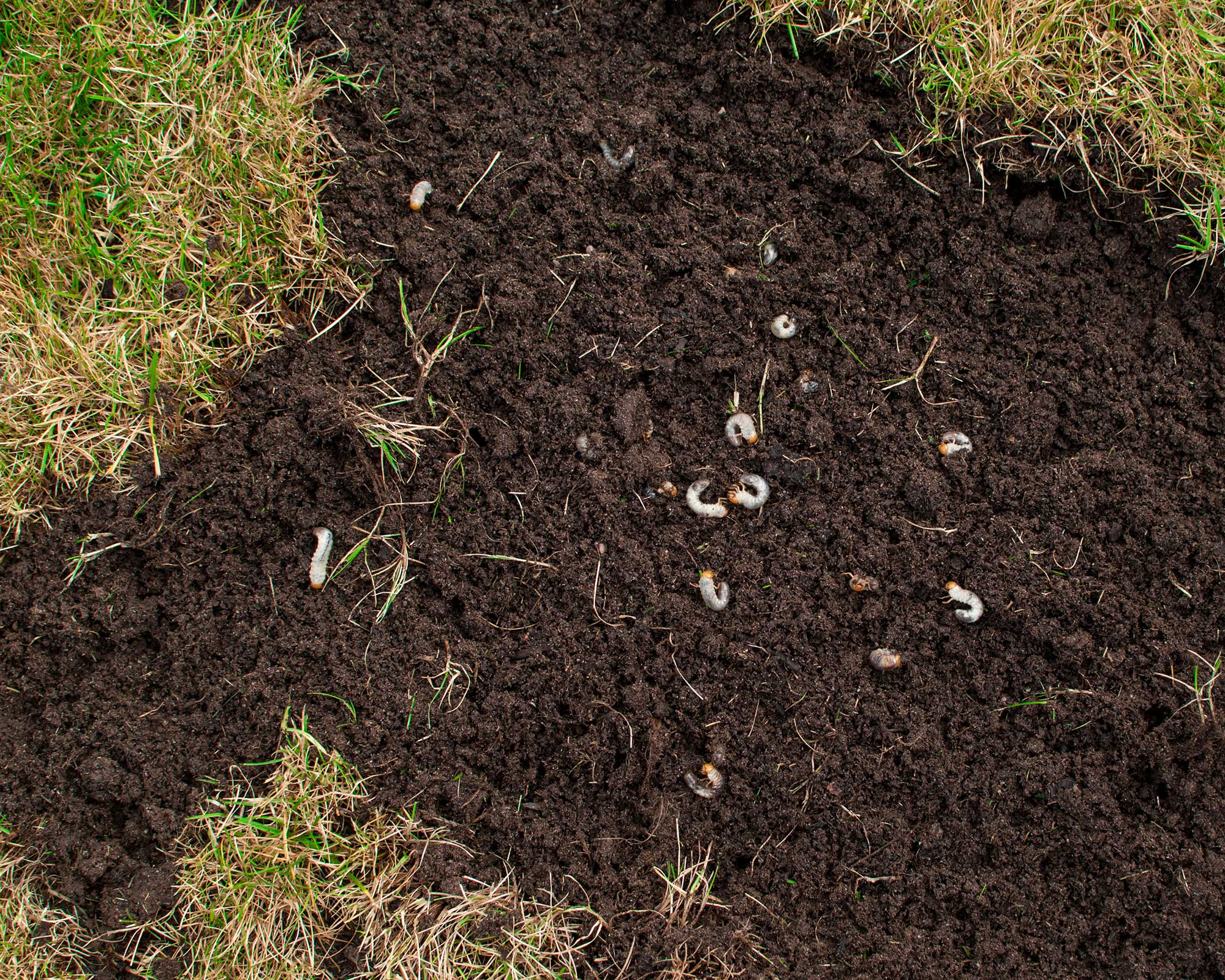
Lawn grubs burrow in the soil beneath turf
How do you know if you have lawn grubs in your garden?
As John Negus says, the damage from lawn grubs can usually be spotted in autumn or spring.
Watch out for patches of grass turning yellow and dying, and more birds being attracted to it than usual in their hunt for the larvae.
In terms of the grubs themselves, beetle grubs, such as chafer grubs, have stout white bodies curved in a 'C' shape, light brown heads, and three pairs of legs at the head end, says John. Many kinds can be up to ¾in (around 18mm) long.
And as for leatherjackets? BASF explains: 'Leatherjackets are about 25mm [1in] long, brown, legless and with no distinct head.'
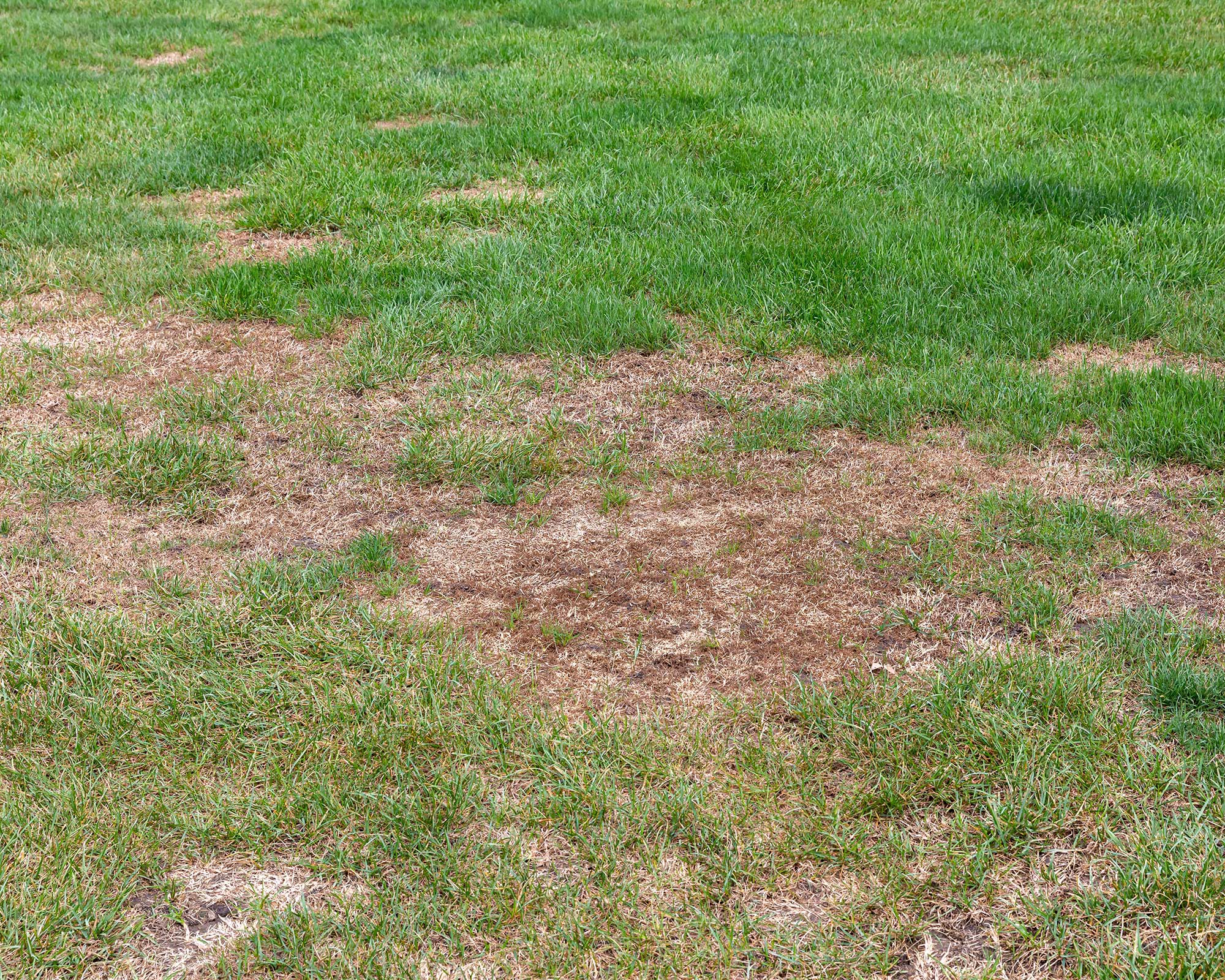
Lawn damage from grubs
Nematodes are ideal is you're looking for a natural and non-chemical way to tackle lawn grubs. But, there are alternative options available, too. Here are three well-rated products.
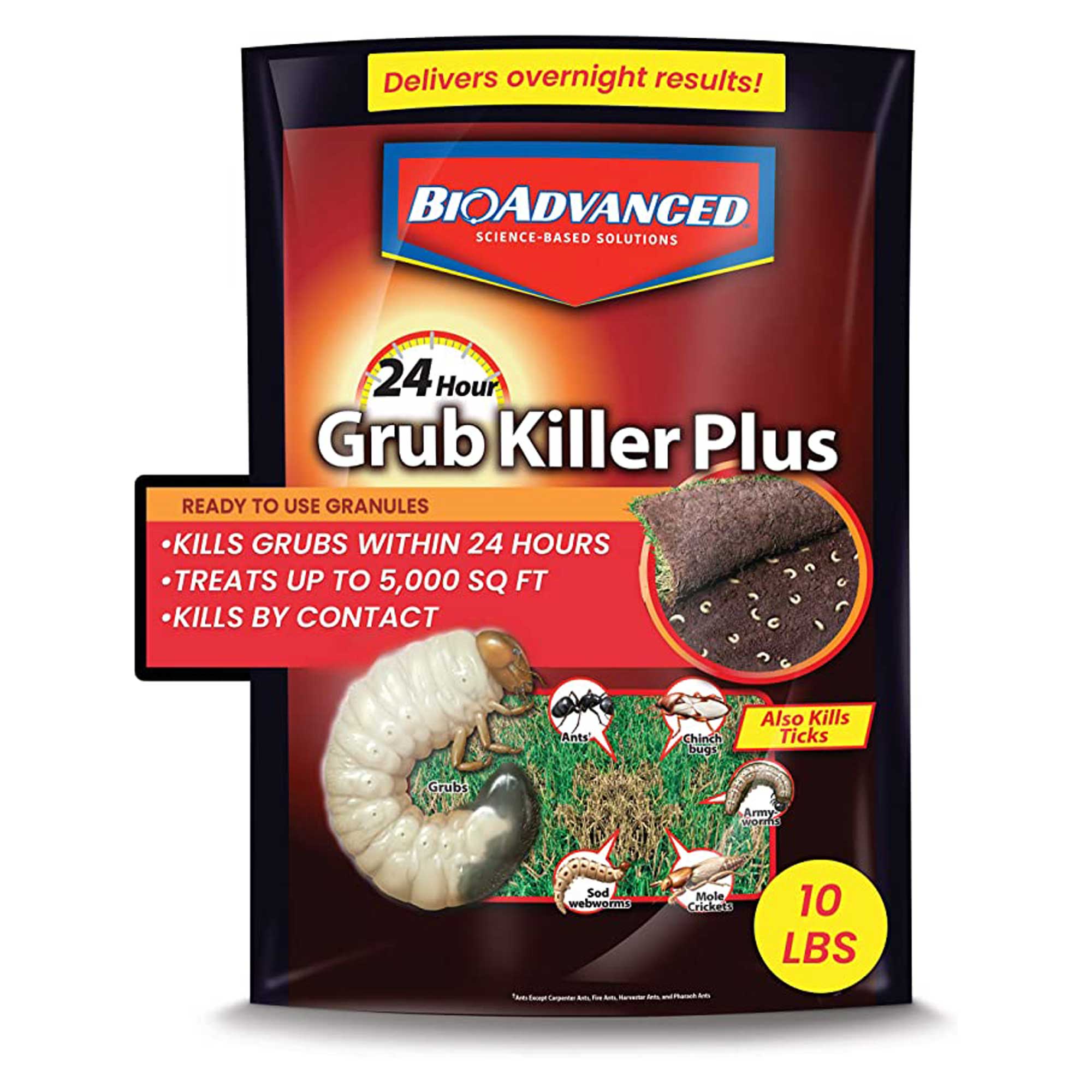
This 10lb bag of easy-to-apply granules is designed to kill lawn grubs in just 24 hours. It also eradicates other lawn pests, including ticks.
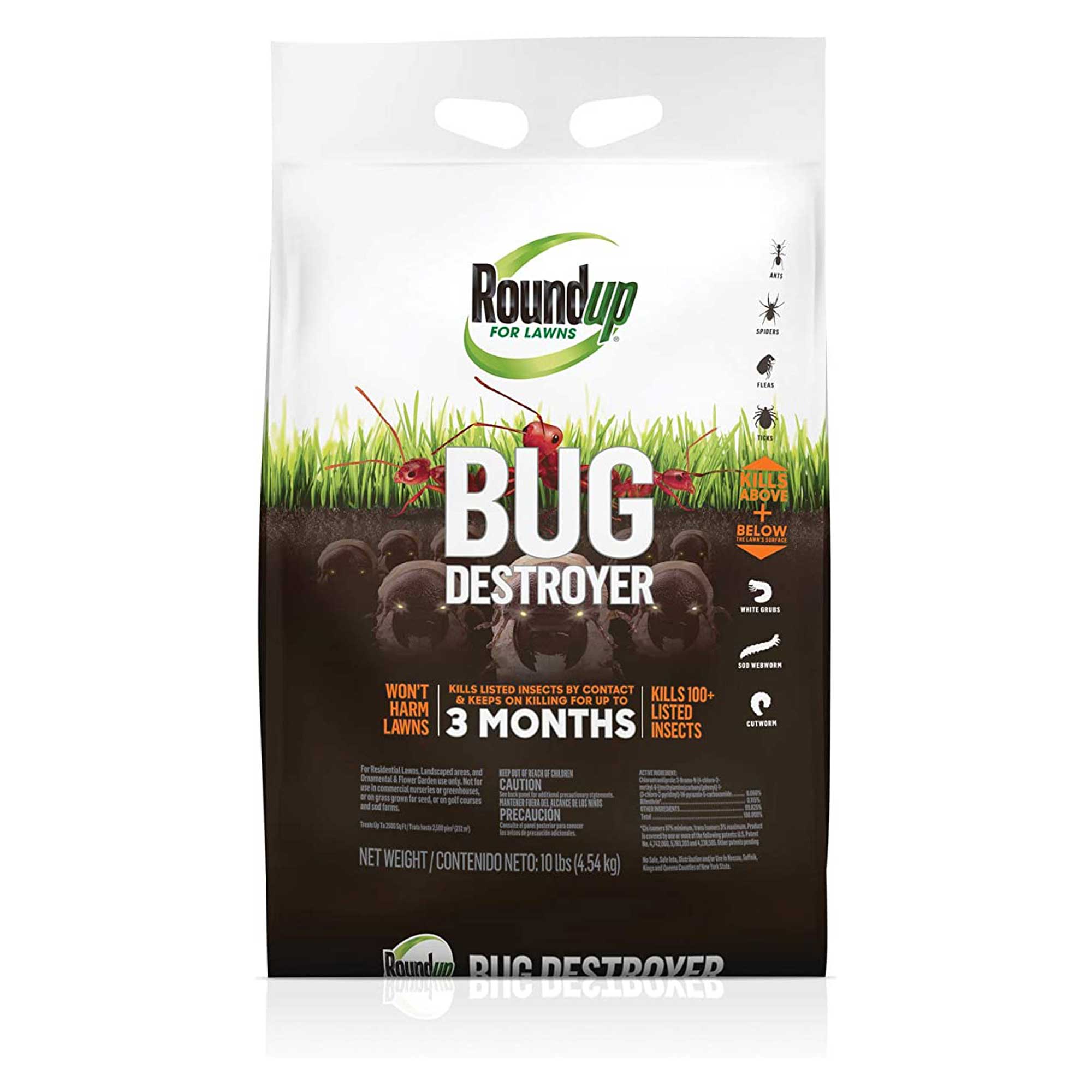
This insecticide kills pests both above and below the lawn's surface, including ticks, white grubs, and cutworms. One application can be effective for up to three months.
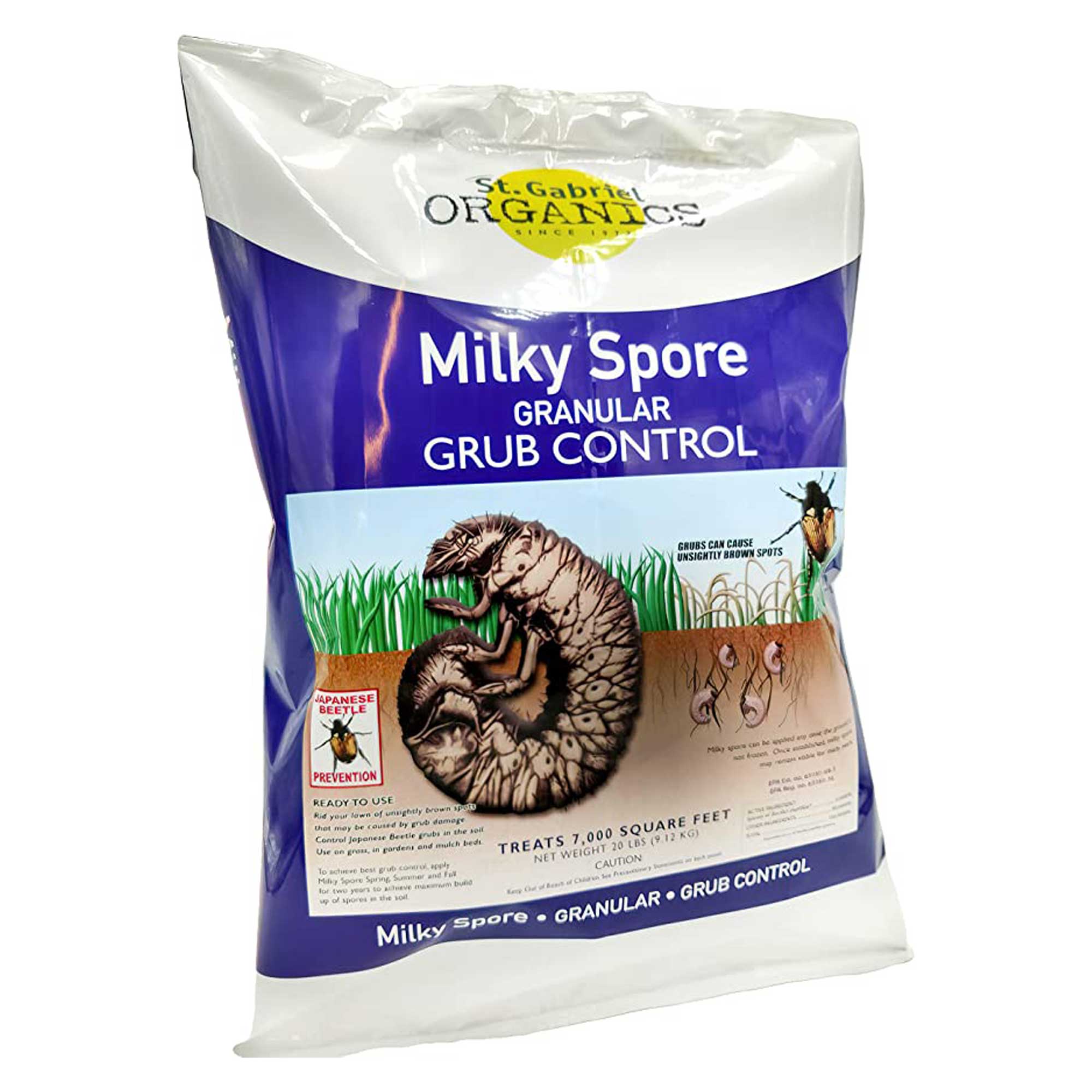
This organic compound tackles Japanese beetle larvae. As it doesn't harm other living things, including beneficial insects, it is a good option for a more wildlife-friendly garden.

The garden was always a big part of Holly's life growing up, as was the surrounding New Forest where she lived. Her appreciation for the great outdoors has only grown since then. She's been an allotment keeper, a professional gardener, and a botanical illustrator – plants are her passion.
